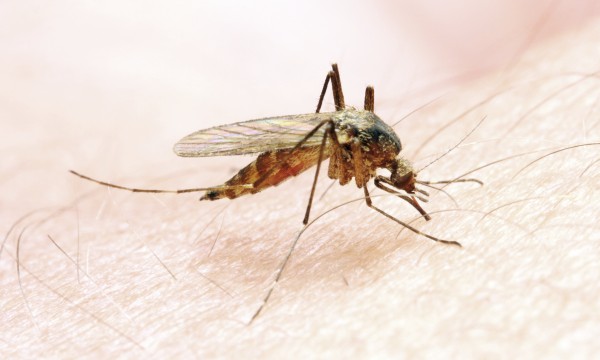Understanding these three types of mosquitos will help you better prevent the kinds of infectious diseases they carry.
- Browse Categories
- All Tips
-
Home & Garden
- All
- Appliances
- Bathroom
- Cleaning
- Crafts
- Decorating
- Electrical
- Flooring
- Furniture
- Garage Door
- Gardening
- Green Living
- Heating
- Home Alarm Systems
- Home Maintenance
- Home Remedies
- Home Security
- Home Staging
- House Sitting
- Junk Removal
- Kitchen
- Lawn Care
- Lock Systems
- Moving
- Outdoor Living
- Pest Control
- Plumbing
- Renovation
- Roofing
- Snow Removal
- Storage
- Tools
- Tree Service
- Health
- Family
- Travel
- Auto
- More Tips

3 types of mosquitoes you need to know about
December 23, 2014

We know them as blood-sucking pests that leave irritable, scratch-inducing bumps, but there’s more to mosquitos than most know. They're nuanced insects that are sub-divided into three types of genera (class). There are approximately 3,500 species of mosquitos in the world and 41 different types of genera, however the majority of mosquitos fall under three genera categories: Aedes, Anopheles and Culex.
1. Aedes
We're more familiar with these mosquitos because the females prey on human blood. They are also known as “floodwater” mosquitos because flooding is an important means for their egg hatching process.
- Female Aedes mosquitos lay eggs on the surface of water and eggs fully mature in six to seven days. A life cycle for Aedes mosquitos usually lasts about two weeks.
- Aedes mosquitos are typically found in sub-tropical to temperate zones and known to carry infectious diseases such as dengue and yellow fever.
2. Anopheles
Anopheles mosquitos most commonly breed in fresh bodies of water that are surrounded by an abundance of wild plant life. Areas with still water such as pond, marshes and swamps, are typical egg-bearing locations for female mosquitos.
- Anopheles mosquitos are important to identify because they're most commonly accountable for spreading the dangerously fatal disease known as malaria.
- Particularly, the Gambiae species transmits the most deadly form of malaria, known as Plasmodium falciparum.
3. Culex
Culex mosquitoes are a diverse genus with more than 20 subgenera that include thousands of species. Similar to Anopheles mosquitoes, Culex lay eggs in still bodies of water, however they do not need to be surrounded by plant wild life. Instead, they lay their eggs in outdoor objects that are capable of carrying stagnant water, such as barrels, cans and garden pots.
- Humans generally don’t need to worry about Culex mosquitoes because they prefer not to bite humans.
- They carry deadly viruses such as West Nile and malaria.
Knowing the three most common genera of mosquitos and the types of diseases they carry provides us with some insight about the relationship between the environment and mosquitoes. When we visit these types of surroundings, it's important to be wary of the mosquitoes that inhabit them and what kinds of infections they could potentially carry.







